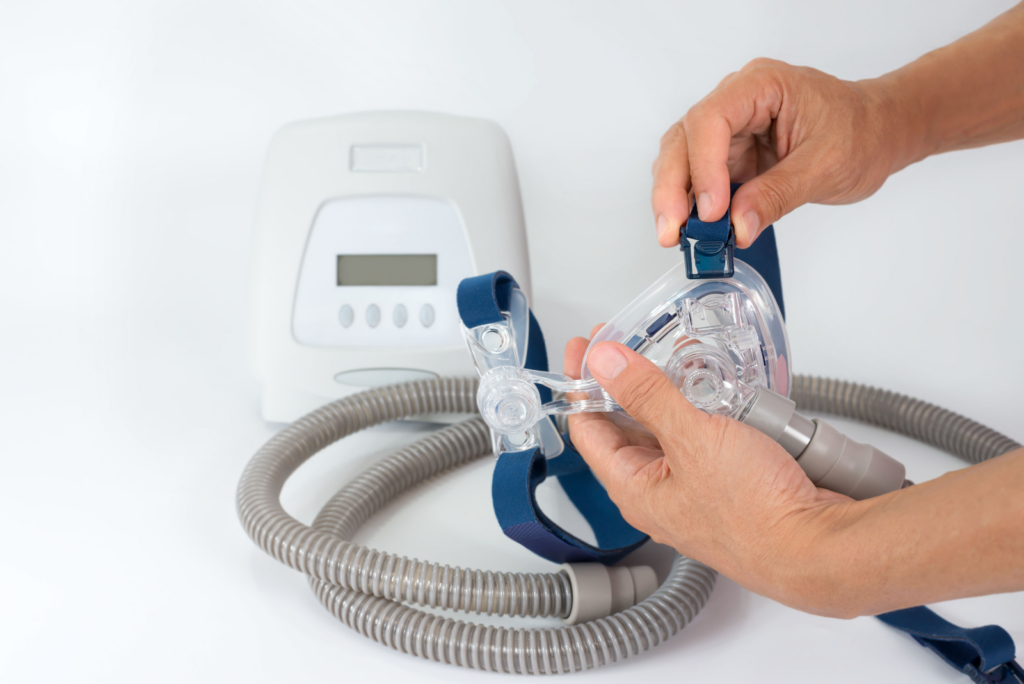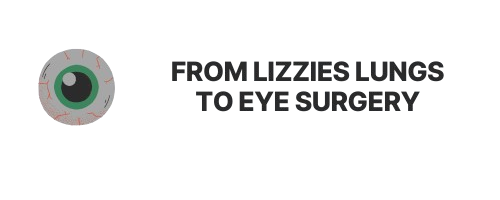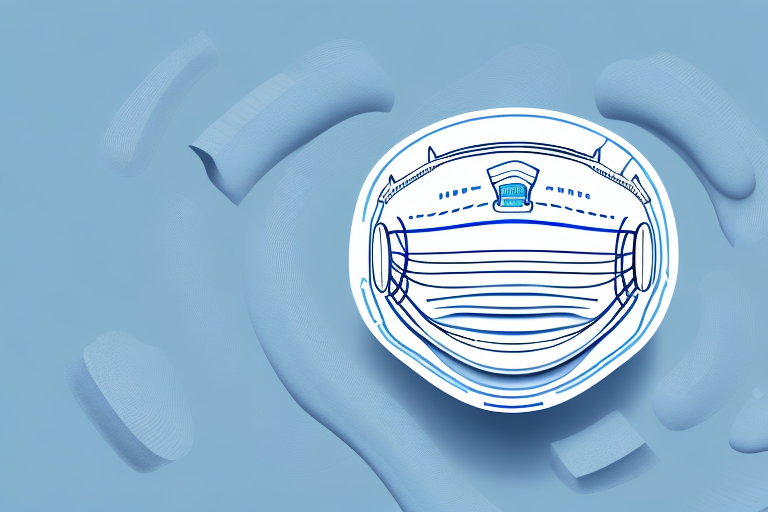Tips for Cleaning and Maintaining Your ResMed Mask
If you use a ResMed mask for nightly sleep apnea treatment, you know how important it is to keep the mask clean and well-maintained. Regular mask cleaning not only helps to ensure optimal performance but also prolongs the lifespan of the mask and helps to prevent skin irritation and allergies. In this article, we will go over some essential tips for cleaning and maintaining your ResMed mask.
Understanding the Importance of Regular Mask Maintenance
The essential part of respiratory therapy is maintaining a clean and functional mask to keep air passages open during sleep. A dirty mask can collect oil from the skin, dirt, grime, and bacteria, leading to infection and leaving you more prone to congestion and allergies. To keep your mask working correctly, make sure you clean it daily and conduct periodic deep cleaning.
Ensuring Optimal Performance
Optimal performance is essential to providing the necessary air pressure to keep your air passages open. If you don’t clean the mask, it can start to leak, which means you won’t receive sufficient air pressure, which defeats the purpose of using the mask. Regular cleaning ensures the optimal functioning of the mask, with a reliable seal and maximum airflow.
Moreover, it is important to note that the optimal performance of your mask is not only crucial for your physical health but also for your mental well-being. A mask that is not functioning correctly can lead to restless nights, disrupted sleep, and fatigue during the day. By maintaining your mask regularly, you can ensure that you get the best possible sleep and wake up feeling refreshed and energized.
Prolonging the Lifespan of Your Mask
Dirt and bacteria can compromise the materials in your mask, leading to rapid wear and tear. A dirty mask means you may need to replace it frequently – a costly exercise. Regular cleaning and maintenance ensure that your mask lasts longer, and you can get the most out of your investment.
Furthermore, by prolonging the lifespan of your mask, you are also contributing to the environment by reducing waste. Masks that end up in landfills can take years to decompose and can have a detrimental impact on our planet. By taking care of your mask, you are not only taking care of your health but also the health of the planet.

Preventing Skin Irritation and Allergies
If you don’t clean your mask regularly, it can lead to skin irritation and allergies. Oil and bacteria from your skin can collect in the mask’s cushion or frame, leading to pimples or even rashes. Cleaning regularly will remove the dirt and bacteria that can lead to skin irritation, and not to mention the unpleasant odors that can develop over time.
In addition, it is important to note that the mask’s material can also play a role in skin irritation and allergies. Some people may be allergic to certain materials used in the mask’s construction, such as latex or silicone. By cleaning your mask regularly, you can also identify any potential issues with the material and take the necessary steps to address them.
Overall, regular mask maintenance is essential for optimal performance, prolonging the lifespan of your mask, and preventing skin irritation and allergies. By taking care of your mask, you are not only taking care of your health but also contributing to the health of the planet. So, make sure you clean your mask regularly and enjoy a good night’s sleep! Learn more about Skin Irritation and Allergies click here.
Gathering the Necessary Cleaning Supplies
Before getting started on cleaning your ResMed mask, you need to have the necessary supplies.
Proper cleaning of your ResMed mask is essential to maintain its effectiveness and longevity. A well-maintained mask will ensure that you receive the best possible treatment for your sleep apnea.
Mild Soap or Mask Cleaning Solution
Use a mild, non-fragrant, non-antibacterial soap to clean your ResMed mask. Avoid using harsh cleaning agents, as they may compromise the mask’s materials. Alternatively, use a specialized mask cleaning solution from a reliable brand, such as ResMed.
It is important to note that you should never use bleach or other harsh chemicals to clean your mask. These substances can damage the mask’s materials and reduce its effectiveness.
Soft Cloth or Sponge
Use a soft cloth or sponge to clean the mask’s cushion and frame. Avoid using rough, abrasive cloths, which may cause scratches or damage.
You should also avoid using paper towels or tissues to clean your mask, as they may leave behind fibers that can irritate your skin or airways.
Distilled Water
Distilled water is preferable to tap water, especially in areas with hard water. Tap water can contain minerals that can build up in your mask over time.
It is recommended that you use distilled water to clean your mask every time, to prevent mineral buildup and ensure that your mask remains clean and hygienic.
Drying Rack or Towel
After cleaning, place the mask on a drying rack or a clean, dry towel to air-dry. Do not use a hairdryer or place the mask in direct sunlight to dry, as it may cause damage.
It is important to ensure that your mask is completely dry before using it again. Any moisture left in the mask can promote the growth of bacteria and other microorganisms, which can be harmful to your health.
By following these simple steps, you can ensure that your ResMed mask remains clean, hygienic, and effective, providing you with the best possible treatment for your sleep apnea.
Daily Cleaning Routine for Your ResMed Mask
Follow these steps for daily cleaning of your ResMed mask to ensure a comfortable and hygienic sleep apnea therapy experience:
Disassembling the Mask Components
The first step in cleaning your ResMed mask is to disconnect it from the tubing and disassemble the mask components. This includes the mask cushion, frame, and headgear. Take your time to ensure that you remove each part gently to avoid damaging any of the components.
Washing the Mask Cushion and Frame
Once you have disassembled the mask, it’s time to wash the cushion and frame. You can use a mild soap or a specialized mask cleaning solution and warm water to clean the surfaces of the cushion and frame. It’s essential to use a soft cloth or sponge to avoid scratching or damaging the mask’s surfaces.
When washing the cushion and frame, pay extra attention to any areas that come into contact with your skin. These areas can accumulate oils, dirt, and sweat, which can cause skin irritation and even mask leaks if not cleaned regularly.
Rinsing and Drying the Mask Parts
After washing the cushion and frame, rinse them thoroughly in warm water to ensure that all the soap has been removed. Gently squeeze the cushion to remove any excess water, being careful not to damage the cushion’s delicate surface.
Once you have rinsed the mask parts, it’s time to dry them. It’s best to leave the mask parts to air-dry on a drying rack or towel, away from direct sunlight and heat sources. Avoid using a hairdryer or any other heating device as it can damage the mask’s components. want to learn more about mask’s components visit https://www.sleepfoundation.org/cpap/how-to-clean-a-cpap-machine
Reassembling the Mask
Once the mask parts have dried completely, it’s time to reassemble the mask. Ensure that the cushion is in the frame correctly and that the headgear attaches the frame to hold the entire mask in place during sleep.
It’s essential to check that all the parts are correctly assembled before using the mask again. A poorly assembled mask can cause leaks, discomfort, and even compromise the effectiveness of your sleep apnea therapy.
By following these simple steps, you can maintain the hygiene and comfort of your ResMed mask, ensuring a restful and effective sleep apnea therapy experience.
Weekly Deep Cleaning for Your ResMed Mask
Performing deep cleaning on your ResMed mask every week is essential to maintaining its longevity and effectiveness. Dirt and oils can build up in the mask over time, leading to discomfort and decreased performance. Here are some steps to follow:
Soaking the Mask Components in Warm Soapy Water
The first step is to disassemble the mask parts, including the cushion, frame, and headgear. Fill a basin with warm water and add a mild soap or mask cleaning solution. Place the mask parts in the basin and let them soak for about 30 minutes. This will help to loosen any dirt and oils that have accumulated.
Scrubbing the Mask Parts with a Soft Brush
After soaking the mask parts, it’s time to gently scrub them with a soft brush. Use a brush with soft bristles to avoid damaging the mask components. Pay extra attention to the cushion and frame, as these are the areas where dirt and oils tend to accumulate the most. Scrubbing will help to remove any remaining dirt and grime.
Rinsing and Drying Thoroughly
Rinse the mask parts thoroughly in warm water to remove all the soap residue. Once you’ve rinsed them, dry the components off thoroughly. Use a clean towel or cloth to pat them dry. Make sure that all the parts are completely dry before reassembling the mask. Moisture can lead to the growth of bacteria and mold, which can be harmful to your health.
Inspecting for Wear and Tear
During cleaning, it’s important to inspect the mask parts for wear and tear. Look for any cracks, tears, or other signs of damage. If you notice any damage, replace the affected parts immediately. Continuing to use a damaged mask can lead to discomfort, poor sleep quality, and even infection.
By following these steps, you can ensure that your ResMed mask remains clean, comfortable, and effective for a long time. Regular deep cleaning will help to extend the life of your mask and improve your overall sleep quality.
Conclusion
Regular cleaning and maintenance of your ResMed mask will ensure that it performs optimally, lasts longer, and prevents skin irritation and allergies. With these essential tips and the right cleaning supplies, you can easily create a daily and weekly cleaning routine to maintain your ResMed mask effectively. Happy and healthy sleeping!

